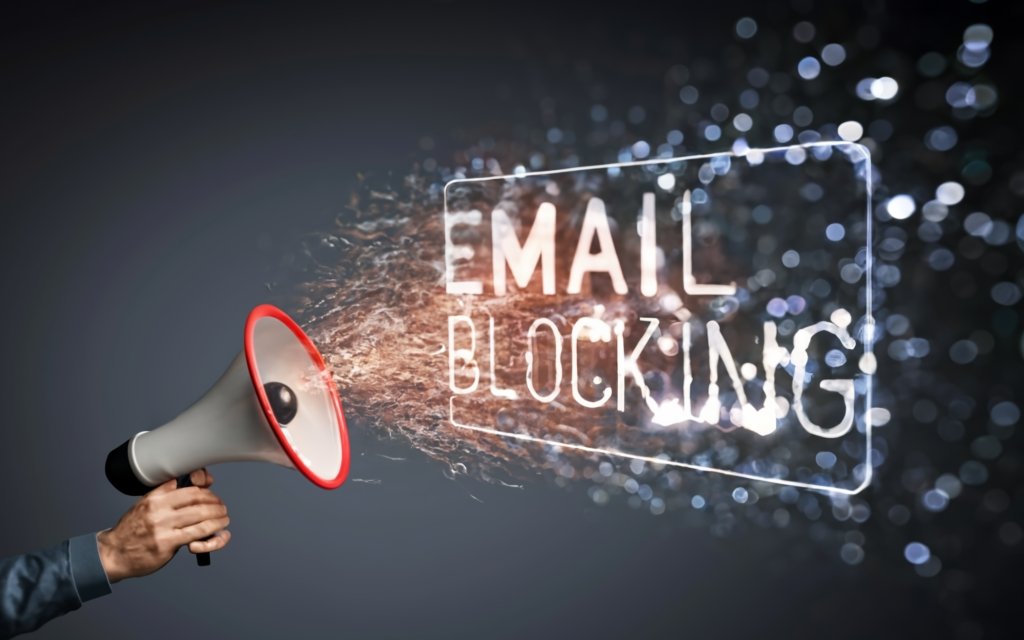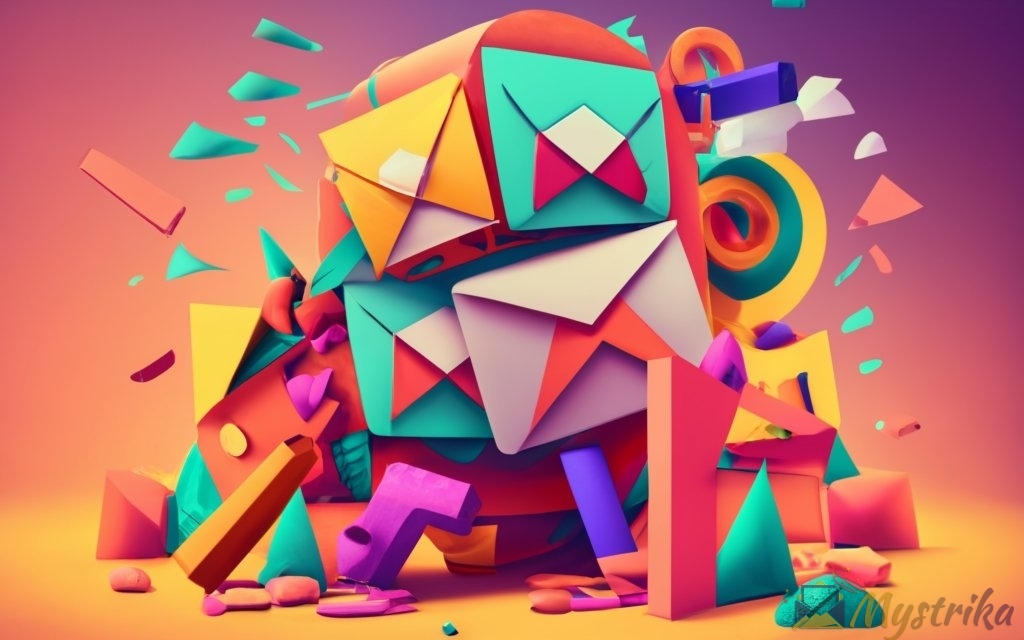Ever get the cold shoulder when emailing someone, wondering if your messages hit a wall? Email blocking is an infuriating reality. But before you take it personally, arm yourself with tricks to confirm if those ghosted digital letters face covert censorship.
This comprehensive guide demystifies the opaque blocking process. Learn subtle clues to detect when recipients banish you to spam purgatory. Master professional tactics to recover or avoid blocks, informed by email experts. The complete blocking handbook awaits – from investigating blocking on Gmail to salvaging soured outreach.
Understanding Email Blocking and Limitations
Wondering why your emails seem to vanish into the void, never reaching their intended recipient? There may be some limitations around email blocking that prevent senders like you from getting clear notifications. Understanding how email transmission works sheds some light on the opacity of the process.
How Email Transmission Works (no sender blocking notifications)
Email has been around since the dawn of the internet, relying on protocols established decades ago. When you hit send, your email gets routed through a series of SMTP servers that simply verify the sender and recipient addresses are valid. Once that handshake occurs, the email gets sent on its merry way, with no further checks or confirmations built into the process.
Unlike modern messaging apps, email was never designed to provide read receipts or notify you if someone blocks you. The SMTP servers facilitating email transport don’t know or care if the recipient blocked you – their job is done once the message is sent. So you’re left in the dark if your email ends up blocked or bouncing.
While some email clients provide optional read receipts, these are unreliable as indicators of blocking. Recipients can disable read receipts, so a lack of response doesn’t necessarily mean you’re blocked explicitly. The onus is on the sender to follow up out-of-band if email reliability is crucial.
Email Provider Blocking Policies (no direct inbox blocking alerts)
Major email providers like Gmail, Outlook, and Yahoo do allow users to block senders. However, none directly notify senders that they have been blocked. Your messages may go to spam or get filtered out, but you won’t get an explicit alert.
Gmail does send automated responses if your email bounces for technical reasons like an invalid address. But there’s radio silence if a recipient manually blocks you. Your messages will head straight to spam purgatory with no notice sent back to your inbox.
Some providers like Outlook allow users to redirect blocked emails to the junk folder. Others like Yahoo enable auto-deletion. But the sender is left clueless either way.
Bottom line – email providers empower recipients to block senders discreetly, with no obligation to inform senders of their blocked status.
Types of Blocking Methods (deletion, filtering, flagging)
Not all blocking methods are created equal. Depending on the provider and user settings, blocked emails may face:
- Deletion – Blocked emails are automatically deleted upon receipt. Senders have no idea emails were even sent.
- Filtering – Blocked emails get tagged or labeled as spam but may still appear in the inbox folder.
- Flagging – Messages get flagged as spam but remain visible in the inbox unless the user deletes or filters them.
These variations mean that just because an email reaches the recipient’s inbox doesn’t guarantee you aren’t blocked. Manual inbox filtering and rapid deletion can make your emails seem to vanish.
There’s also no rule that providers must notify senders even if an email is deleted or bounced as spam. You may get hints like delivery failures for bounced messages, but nothing definite confirming a block.
The technical limitations around email protocols mean determining blocking status is more art than science. But some techniques can help shine a light, as we’ll explore next.

Clues Your Email May Be Blocked
While email protocols don’t directly inform you of blocking, your recipient’s behavior provides clues about what might be going on behind the scenes. By watching for certain patterns and inconsistencies, you can make educated guesses if your emails hit a block wall.
No Response from Recipient
The most obvious red flag is when your recipient suddenly goes radio silent and ignores your emails altogether. If they previously responded reliably, a lack of response could signal something changed on their end.
However, don’t jump to conclusions if they occasionally don’t respond – they may simply have gotten busy. Look for prolonged silence over weeks or months, not just a few missed emails here and there. Patterns are telling.
Also consider if they continue to respond to other communication channels like phone, social media, or in-person conversations. If you’re blocked, they likely won’t reply on those channels either. Multi-channel silence, not just email, strengthens the blocking hypothesis.
Emails Bouncing Back or Going to Spam
Another clue is when your emails start bouncing back or landing in the recipient’s spam folder. You may get hit with delivery failure notifications, or the recipient may tell you your emails ended up as spam.
Look for bounce notifications using terms like “undeliverable” or “rejected.” Codes like “550” on Gmail indicate permanent rejection.
If emails go to spam, the recipient may let you know after you follow up out-of-band. They can retrieve emails from spam and tell you they found your messages there.
These signs don’t definitively prove blocking – technical glitches can cause bounces, and spam filters make mistakes. But if you notice a sudden pattern change, blocking becomes a prime suspect.
Not Receiving But Others Getting Emails
A clear alert is when your recipient receives emails from other contacts, but yours continually go into a black hole. This disparity points to your specific address or domain being blocked.
You can get this intel directly from the recipient if you ask them specifically about receiving your emails. They may tell you messages from your address never come, while they get emails fine from others.
Out-of-band chatter with other contacts who email the recipient can also uncover clues. Peers may mention getting responses and confirms from the same person ghosting your messages.
This discrepancy provides stronger proof of a block than just lack of replies alone. The recipient’s behavior indicates your emails particularly hit a wall.
Trying Other Communication Channels
Finally, take the direct approach and message your recipient through other modes of communication. A phone call, text, social media direct message, etc can provide definitive clues in some cases.
If they respond via another channel but continue ignoring your emails, that essentially confirms your address is specifically blocked.
Be tactful in your outreach – don’t aggressively accuse them of blocking you. Simply ask if they recall getting your recent emails, feigning innocence about any blocking. Their response may reveal useful intel.
Also consider if they left any social media comments, posts, or interactions with others during their period of email silence. Activity on those channels indicates they aren’t totally off the grid and are deliberately avoiding your emails.
Of course, consider other reasons too for lack of responses, like travel, family emergencies, or crammed work schedules. But if other signals point to blocking, don’t ignore those red flags.
The signs aren’t definitive proof on their own, but together can strongly indicate your emails met an untimely demise due to blocking. Next we’ll drill specifically into how to sleuth out blocking on different email providers.
Confirming Gmail Blocking Status
Gmail’s ubiquitous popularity means clues about blocking on this platform are highly sought after. While direct blocking alerts remain elusive, Gmail does offer some backdoor channels to detect potential blocks. Combining creative tests can get you closer to confirming suspicions.
Checking Google Hangouts Contacts
Longtime Gmail users may recall Google Hangouts as a previous chat feature. Google shut down Hangouts in 2022, but before that, its contact list provided clues about potential blocking.
When searching for a suspected blocked recipient in Hangouts, if their profile picture didn’t load, that suggested you were blocked. This loophole relied on profile pics not loading for blocked contacts.
However, current testing indicates Google likely closed this loophole. Profile pics still populate for blocked recipients in Hangouts successors like Google Chat. So this technique is now archaic.
Sending Test Emails from Other Accounts
A better approach is sending emails from accounts besides your main one as a test. Create a fresh Gmail address not associated with your name or domain.
Send the recipient a message from this new test account, with neutral content unrelated to prior conversations. If they reply, that signals your main account may be specifically blocked.
You can also ask friends to include your suspect blocked recipient when emailing out event invites or group conversations. Look for instances where others get replies but your inclusion is ignored.
Using Third-Party Browser Extensions
Finally, browser extensions like Mixmax and Mailtrack provide read receipt tracking to gauge email opens. These act as third-party confirmations when native Gmail read receipts won’t cut it.
Tracked email stats indicating your messages go unopened while peer emails to the same recipient get opened provides compelling evidence of blocking.
Of course, read receipts aren’t foolproof either – recipients can disable them. But lacking data for your emails versus peer data underscores email irregularities.
No silver bullet perfectly confirms Gmail blocking. Google preserves recipients’ privacy by not directly ratting them out. But savvy senders can still collect clues to make reasonable guesses. Just don’t expect an official blocking notice.
On other providers like Yahoo or Outlook, similar tricks apply. But tactics must be tailored to each platform’s unique features.

Determining Blocking on Other Providers
Gmail isn’t the only game in town – email stalwarts like Outlook and Yahoo also boast millions of users. Tactics to confirm blocking on these legacy providers bear similarities to Gmail, but with key distinctions. Understanding each platform’s unique traits helps customize blocking tests.
Testing Blocking on Outlook, Yahoo, etc.
Unlike Gmail, Outlook and Yahoo lack built-in secondary communication channels like Hangouts to hint at blocking status. However, their webmail interfaces provide other clues.
On Outlook and Yahoo, log into the web portal and browse your sent email folder. Look for warning banners indicating delivery failures, bouncing, or redirecting emails to spam. Explicit bounce notices with blocking terminology provide strong clues.
Also consider toggling between views of your sent items versus the recipient’s inbox. Sent emails showing for you but disappearing from the recipient’s view suggest selective blocking.
Watching for Hard Bounces in Hotmail/Outlook
Legacy Hotmail accounts now rebranded Outlook may provide extra blocking clues. Hard bounce emails from Hotmail/Outlook indicating “email blocked” or similar language are definitive blocking confirms.
Soft bounces that cite temporary resolvability issues are less conclusive. But hard bounces directly state the recipient purposefully blocked delivery. Watch for these smoking gun notifications.
However, hard bounce alerts aren’t guaranteed – settings can disable them. But when present, they eliminate doubt that the recipient blocked you specifically.
Sending Test Emails from Other Accounts
As with Gmail, sending emails from other accounts not associated with you provides perspective. Does the recipient reply to your friend’s email while ignoring yours?
Set up fresh email accounts on a private domain or alias service expressly for this test. Avoid connecting the test account directly to your name or branding.
Then send the recipient a plain test email devoid of any references to your identity or prior exchanges. If they reply, you have your answer that your main email is blocked.
Of course, also consider other reasons for lack of replies before declaring outright blocking. But combined with other signs, failed test emails strongly indicate blocking.
Tailoring strategies to Outlook, Yahoo and other providers requires knowing their unique traits. But the underlying techniques are similar across providers to reverse engineer blocking theories.
Avoiding Being Blocked
Confirming blocking can be a drag, but avoiding blocks in the first place is ideal. Adopting prudent email habits and outreach hygiene greatly reduces your blocking risk. Let’s review some best practices to steer clear of recipients’ red flags.
Following Email Laws and Best Practices
Bluntly, don’t break laws! Spammers and scammers rightfully get the boot. Know anti-spam regulations in your region, like the CAN-SPAM Act in the United States.
Key guidelines include properly identifying yourself, honoring opt-out requests, and ensuring consent for commercial messages. Steer very clear of illegally harvesting emails or sending deceptive content.
Beyond lawful practices, employ sound technical habits. Properly configure SPF and DKIM records to authenticate your domain. Keep email security updated with filters for malware links and attachments. Don’t buy shady email lists – garbage in, garbage out.
Maintaining List Hygiene and Removing Inactive Contacts
They say you’re the company you keep. The same applies to your email list! Keep it trimmed of inactive and bounced contacts.
Review your list monthly and prune contacts with low open rates or high spam complaints. Adjust the frequency of your campaigns to avoid overwhelming recipients.
And never send bulk emails to purchased lists without first confirming opt-in consent. Blind email blasting is sure to earn blocking.
Avoiding Too Frequent Outreach
On that note, restraint and tact go a long way. Email marketing best practices dictate no more than one campaign per week per recipient.
Set yourself a hard ceiling, and stick to it. Reign in overzealous sales teams prone to harassing clients. Make unsubscribes easy – don’t trap recipients.
Time outreach appropriately as well. Avoid spamming someone’s inbox at 3 AM or interrupting their vacation. Pay attention to conversations and context clues.
Personalizing Outreach and Providing Value
Leverage email’s strength for personalization. Segment campaigns, customize subject lines, and incorporate data like past purchases into your content.
Avoid overly salesy language. Focus on providing value through industry insights, exclusive offers, and horizon content. Treat subscribers as partners, not just leads.
Follow the motto – “Give first, sell later.” Establish reciprocity and demonstrate your respect for recipients’ time. They’ll reward you by opening – not blocking – your emails.
Also consider the cadence and goal of your emails. Promotional blasts warrant different strategies versus relationship-building touch points. Align tone with intent.
No foolproof way prevents ever being blocked by someone. But following sound practices minimizes your risks significantly. The smallest details make a difference.
For example, even your preheader preview text can tip blocking scales by giving your recipient a flavor of your content’s value.
There’s no quick hack for guaranteed inboxing. But investing in long-term subscriber relationships generates huge dividends for your sender reputation. Their block finger stays at ease.
Now let’s shift gears to address scenarios where blocking has regrettably occurred and how to handle it professionally.
When Blocking Occurs
Despite best efforts, sometimes recipients still block your emails. When this happens, respond professionally. Avoid escalating the situation with aggressive tactics that justify their blocking.
Respecting Recipients’ Wishes
First and foremost, respect their wishes. You may disagree with being blocked, but honor their right to choose who fills their inbox.
Don’t try to manipulate or sneak around blocks. Crossing these boundaries constitutes harassment, especially for personal contacts.
For professional relationships, a phone call or personalized video message may reopen the conversation. But only attempt this once – don’t badger them.
Understanding Blocking Isn’t Personal
In most cases, blocking is not a personal attack. Business contacts block excessive solicitations as a productivity measure. Don’t take it as an affront.
They may be following cybersecurity best practices by limiting points of access. Or they changed roles and no longer need your services. Don’t conjure ulterior motives.
Even personal contexts like blocked romantic advances often have circumstantial motivations – not innate rejection.
Moving On and Refocusing Efforts
Ultimately, dwell on a blocked email briefly, learn what you can, then refocus energy where it’s welcomed.
Don’t desperately chase an ice-cold contact who has clearly communicated disinterest. They likely won’t become a loyal buyer even if unblocked.
Evaluate why that subscriber didn’t resonate with your messaging. But also recognize you can’t be all things to all people. Find your niche.
Use the time spent fretting over one blocked email to engage ten new contacts instead. A handful may block you, but some will also subscribe if you provide value.
Consider your services may truly not suit that prospect. Or the match’s timing was off. Follow up in a few months if warranted to see if circumstances changed.
But generally, shift efforts to warmer leads who reciprocate interest. Valuable customers await that eagerly welcome your emails. Chase those ideal buyers, not blocked ghosts of the past.
Reacting maturely and professionally when blocked turns an obstacle into a learning experience. Handled poorly, it becomes a wasted opportunity.

Key Takeaways on Identifying Blocked Emails
Let’s tie this all together by recapping core lessons for deciphering when your emails get blocked. Follow these tips to detect blocking while maintaining professionalism and focusing on quality conversations.
Summary of Tactics to Test for Blocking
Here are some of the top techniques covered to determine if recipients blocked you:
- Email directly from a fresh, neutral address – Do they reply?
- Check if peers get responses to the same recipient ignoring you.
- Watch for delivery failure notifications using blocking terminology.
- Enable read receipts to compare your email stats versus peers’.
- Check secondary channels on the platform like Google Hangouts contacts.
- Use third-party tracking tools to monitor email opens and response metrics.
- If on good terms, tactfully ask the recipient if they’ve received your recent messages.
No Surefire Ways but Contextual Clues Are Telltale
No single method provides guaranteed proof of blocking. Short of a recipient directly confessing, you can’t know with 100% certainty.
But look for patterns in the above signals rather than smoking gun one-offs. Together, contextual clues form a mosaic that reveals if you’re likely blocked.
Accept some uncertainty, and focus on what you can control – being a reputable sender. Don’t obsess over definitively proving if recipients blocked you. Move forward productively.
Focus Efforts on Engaged Recipients for Best Results
Rather than badgering reluctant subscribers, direct energy where it’s welcomed. Identify your ideal audience through metrics like engagement and lifetime value.
Target prospects who respond to your messaging, not those who ignore and ultimately block you. Persisting where you’re clearly not wanted is counterproductive.
View blocking as market feedback to refine your approach. Learn from the experience, then seek enthusiastic new leads. Build loyalty with those who appreciate your offerings.
The reality is blocking is an unavoidable possibility when doing email outreach at scale. Don’t take it personally. Frame it as an opportunity to grow and find aligned partners. With strategic tweaks, your emails will be eagerly awaited, not blocked.
Summary – Detecting and Avoiding Blocked Emails
Email blocking is an opaque process, but not impossible to decipher. By watching for patterns and inconsistencies, you can make educated guesses if your outreach hits a wall. These key lessons reinforce best practices to overcome blocking challenges:
- Email architecture provides no direct blocking notifications. You must rely on recipient patterns and test emails to infer their status.
- Indicators like lack of replies, bounced messages, and spam filtering suggest blocking. But confirm with multi-channel outreach.
- On Gmail, try contacts in Hangouts or extensions to track opens. For Outlook, watch for hard bounce alerts.
- Avoid blocks by following email regulations, limiting frequency, personalizing content, and maintaining list hygiene.
- If blocked, respect the recipient’s wishes and move on. Don’t take it personally or try to force re-opening communication.
- Focus on engaged subscribers who value your messaging. Eliminate chronic blockers from campaigns to optimize deliverability.
Blocking remains an unavoidable nuisance for email marketers. But a calibrated, professional response minimizes its impact. With observation and care, your sender reputation thrives and inboxes stay open.

Frequently Asked Questions About Blocked Emails
Still have some lingering questions about managing blocked emails? These FAQs address common pain points.
Q: How can I tell if someone blocked me on Gmail?
A: Check if their profile shows in Hangouts contacts, use read tracking extensions, or send a test email from a different account and watch for a reply.
Q: Does Outlook notify you when someone blocks your email?
A: No, Outlook does not directly notify senders about blocking. However, blocked emails may bounce back with a notification they were blocked.
Q: What happens when you block an email on iPhone?
A: On iPhone’s Mail app, blocking sends an email to the trash folder. Senders are not notified of the block.
Q: Can someone still email you if they’re blocked on Gmail?
A: Yes, they can still send emails but you won’t receive them in your inbox if you’ve blocked their address. The emails go to spam or are deleted.
Q: If I flag an email as spam, does the sender know?
A: No, the sender will not be alerted if you flag their email as spam. The message will be marked as spam for you locally.
Q: How often can I email someone before getting blocked?
A: Best practice is no more than one marketing email per week per recipient. More than that risks annoyance and blocking.
Q: What happens if my IP address gets blocked for email?
A: A blocked IP affects your ability to send email from your server. You may need a new IP, proper authentication, or remove any suspected spam content.
Q: I think I’m blocked – should I email them from a different address?
A: No, that will likely worsen perceptions. Respect their wishes and connect through an alternative channel if you must re-engage professionally.
Let me know if you need any other common questions covered!

